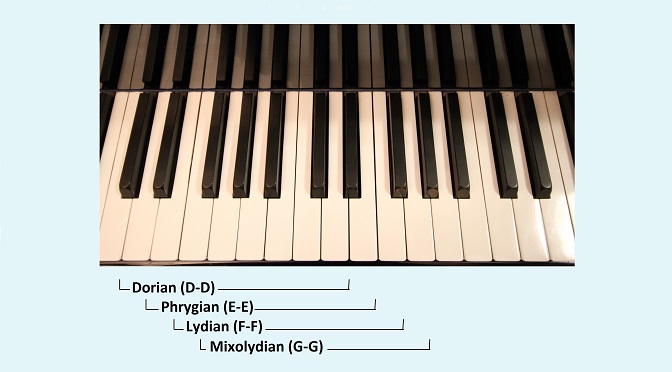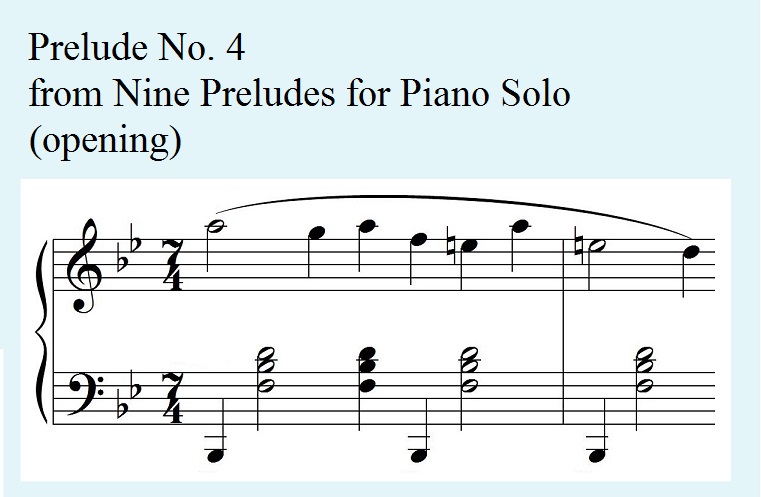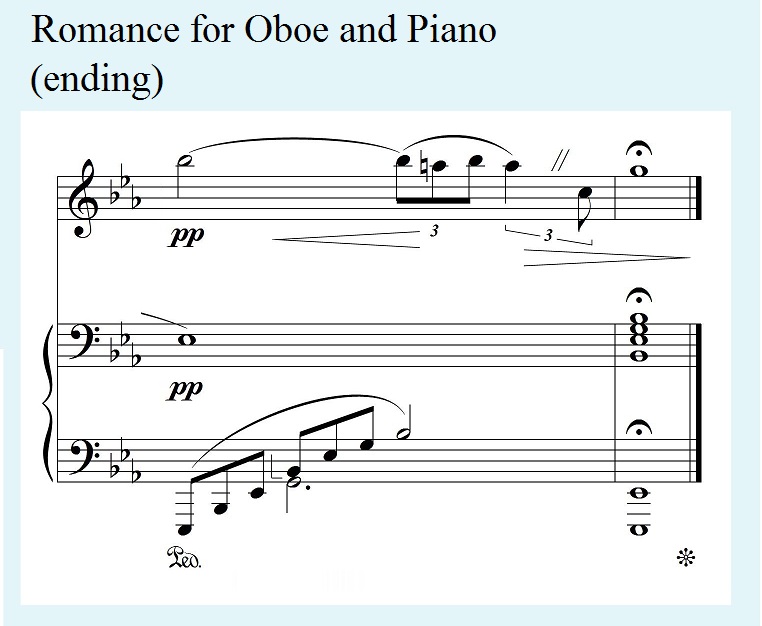Music à la Mode
In medieval and Renaissance times, before tonality developed into its modern form, Western music was based on a system of modes rather than the major and minor keys we use today. But modern compositions can still make reference to the old modes, and such modal references tend to evoke other eras — or perhaps older folk music (which was also modal). In general, they can lend a touch of exotic interest to music.
The modal system was complex, but can be understood in terms of the white keys on a piano. The octave span of keys from C to C defines the major scale upon which pieces in major keys are based, but we can derive other modes from other octave spans, some of which are shown in the illustration. For example, the Lydian mode can be understood in terms of the span of keys from F to F, which makes it similar to the F major scale except that the fourth degree is raised by a half step, from B-flat to B-natural.

In a piece in B-flat major, you could also allude to Lydian mode by raising the fourth degree of the B-flat scale from E-flat to E-natural. That’s exactly what happens at the start of the main melody of my Prelude No. 4. (For the technically inclined, the modal reference is clear here because the E-natural does not function as a leading tone to F.)

At one point later in the piece, the main melody returns in the secondary tonal center of G Major, and the fourth degree in this secondary key is raised (from C to C-sharp). The modal allusions combine with the 7/4 meter to create exotic flavor.
In my Romance for Oboe and Piano, frequent references to Lydian mode help to impart a mournful quality to the melody. An especially poignant example appears at the very end of the piece. This time the key is E-flat major, so the raised fourth degree is A-natural.

In the next-to-last measure, after a long ritardando, the oboe sounds the A-natural over tonic harmony in the piano, allowing it to “hang in the air” across a caesura before resolving downward to G.

